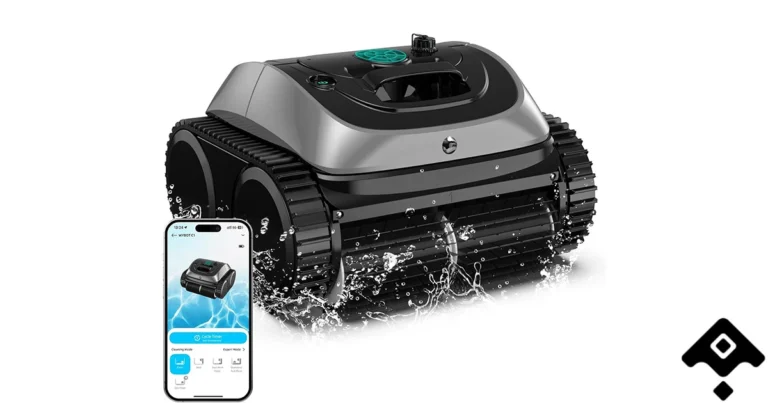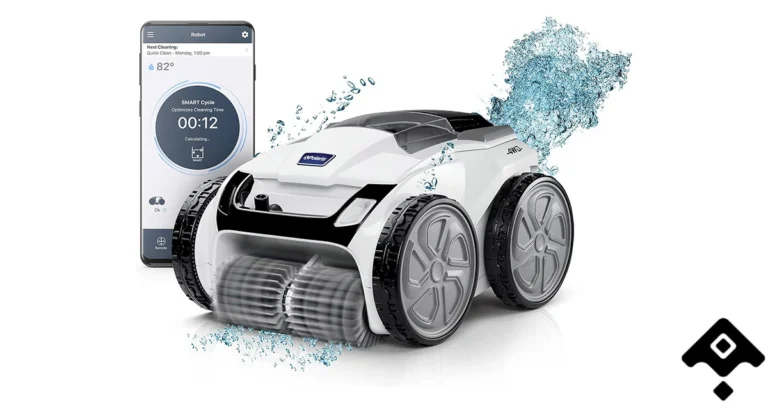
Google pixel 10 pro
⚙Specs
Battery Capacity: 4,870 mAh
Camera Coach: Real-time scene analysis & tips using Gemini AI
Colors: Obsidian, Porcelain, Moonstone, Jade
Conversational Photo Editing: Complex edits via voice commands/natural language
Design: Satin-finish metal frame, polished glass back, Gorilla Glass Victus 2 (front & back)
Dimensions: 152.8 × 72 × 8.6 mm
Display: 6.3-inch LTPO OLED (1280 × 2856 pixels, 495 PPI, 1–120Hz, 3,300 nits peak brightness)
Front Camera: 42MP with autofocus (4K video)
Magic Cue: Surfaces relevant info from apps (e.g., dinner location from a text)
Main Camera: 50MP
NotebookLM: AI assistant for summarizing documents, videos, and sources
Operating System: Android 16
Processor: Google Tensor G5 (AI-optimized)
Pro Res Zoom: AI-enhanced zoom with picture-in-picture aiming
RAM: 16GB LPDDR5X
Storage Options: 128GB / 256GB / 512GB / 1TB
Telephoto Camera: 48MP (5× optical zoom, up to 100× Pro Res Zoom)
Ultrawide Camera: 48MP
Updates: 7 years of OS & security updates
Video (Rear): Up to 8K recording with Video Boost stabilization
Weight: 207 g
Wired Charging: 30W fast charging
Wireless Charging: 15W Qi2 wireless charging + Pixelsnap magnetic accessory system
What i like
- Genuinely compact flagship design
- Excellent camera system with outstanding computational photography
- Improved battery life and thermal management
- Clean Android experience with long-term update commitment
- Bright, color-accurate display
- Refined build quality and materials
What Could Be Better
- Gaming and GPU performance lags behind competition
- Slower charging speeds compared to rivals
- Limited screen size may frustrate some users
- Video quality still behind iPhone competitors
- Some AI features feel unnecessary
- Premium pricing for modest hardware improvements
After spending several days reviewing the Google Pixel 10 Pro as my daily driver, I find myself in a familiar position with Google’s flagship phones: simultaneously impressed by its software intelligence and frustrated by some fundamental hardware choices. The Pixel 10 Pro, released on August 28, 2025, features a 6.3-inch display, triple camera system, 4,870 mAh battery, 16GB RAM, and Google’s new Tensor G5 processor running Android 16.
Design and Build Quality: Compact Excellence
The Pixel 10 Pro strikes an increasingly rare balance in today’s smartphone landscape: flagship specifications in a genuinely compact form factor. With its 6.3-inch display, Google has managed to pack top-tier specs into a truly compact body, making it one of the few high-end Android phones that doesn’t require two hands for comfortable operation.
The build quality feels reassuringly premium, with Google’s signature camera bar now more refined than ever. The aluminum frame has a satisfying heft without feeling overly dense, and the matte finish on the back resists fingerprints better than its glossy predecessors. After dropping it twice onto concrete (unintentionally, I assure you), the phone showed minimal scuffing, though I’d still recommend a case for long-term protection.
What strikes me most about the design is how Google has managed to maintain the distinctive Pixel identity while making subtle refinements. The camera visor integrates more seamlessly with the overall aesthetic, and the color options feel more sophisticated than previous generations. However, at 207g and 8.5mm thick, it’s not exactly lightweight, and the camera bump still prevents the phone from lying flat on surfaces.
Display: Bright and Beautiful, But Size Matters
The 6.3-inch Actua display represents both the Pixel 10 Pro’s greatest asset and its most polarizing feature. Google has equipped the device with a new, brighter screen that genuinely excels in outdoor visibility. Peak brightness has improved noticeably from the Pixel 9 Pro, making content consumption in direct sunlight actually pleasant rather than a squinting exercise.
Color accuracy remains exceptional, with Google’s typical preference for slightly warmer tones that feel natural rather than oversaturated. The 120Hz refresh rate is smooth and responsive, though it’s not groundbreaking at this point. What is noteworthy is how well the variable refresh rate adapts to different content types—I noticed the display intelligently scaling down to preserve battery life during static content viewing.
The challenge, however, is the screen size itself. Coming from larger phones, the 6.3-inch display initially felt cramped for media consumption and productivity tasks. While it’s undeniably more pocketable and one-hand friendly, the trade-off becomes apparent when editing photos, reading lengthy articles, or multitasking. It’s a deliberate choice that will either delight compact phone enthusiasts or frustrate those accustomed to larger displays.
Performance: The Tensor G5 Conundrum
Here’s where the Pixel 10 Pro becomes genuinely complicated. The new Tensor G5 custom silicon represents the most significant upgrade to Google’s chip since Tensor’s debut, delivering snappy performance, yet the reality is more nuanced than Google’s marketing suggests.
Compared to the Tensor G4, the G5 boasts a 34% faster CPU and a 60% more powerful TPU, which should deliver smoother performance, faster AI processing, and better battery efficiency. In daily use, this translates to genuinely responsive performance for typical smartphone tasks. App launches are quick, multitasking feels fluid, and the camera processing is noticeably faster than previous Pixels.
However, early benchmarks show CPU performance on par with 2023 flagship chipsets, and GPU performance worse than the Pixel 9 series, identical to 2021 flagship chipsets. This creates a strange dichotomy: the phone feels fast in practice but performs poorly in synthetic tests. Gaming performance, in particular, remains a weak point, with demanding titles like Genshin Impact struggling to maintain consistent frame rates at high settings.
The silver lining is thermal management. While still unimpressive on benchmarks, the Tensor G5 largely solves overheating problems that plagued previous generations. During extended camera sessions and intensive app usage, the phone remained comfortably warm rather than uncomfortably hot, a meaningful improvement for real-world usability.
Camera System: Google’s Continued Excellence
The camera system represents the Pixel 10 Pro’s strongest suit, maintaining Google’s reputation for computational photography excellence. The triple camera setup includes what appears to be refined versions of Google’s established sensors, but the real magic happens in software processing.
The main 50MP sensor produces consistently impressive results across various lighting conditions. Google’s HDR processing has reached a level of sophistication where it rarely feels overdone, maintaining natural contrast while pulling detail from shadows and highlights. Portrait mode has improved noticeably, with better edge detection and more natural bokeh rendering.
The ultrawide camera provides solid, if unremarkable, performance. It’s useful for architectural photography and group shots, but don’t expect the same level of processing refinement as the main sensor. The telephoto lens offers genuine utility with its optical zoom capabilities, though it struggles in lower light conditions compared to the main camera.
Where the Pixel 10 Pro truly shines is in computational photography features. Night mode continues to produce seemingly impossible results, turning challenging low-light scenes into usable, often beautiful photographs. The new AI-powered features feel more intuitive and less gimmicky than previous generations, seamlessly enhancing photos without obvious artificial processing artifacts.
However, the lack of a dedicated macro mode feels like an oversight at this price point, and video quality, while improved, still lags behind competitors like the iPhone 15 Pro in terms of stabilization and color science.
Battery Life: A Genuine Improvement
Battery performance represents one of the Pixel 10 Pro’s most significant upgrades. The Pixel 10 Pro features a 4,870 mAh battery with 30W charging, and every Pixel 10 phone has over 30 hours of battery life compared to 24+ hours with the Pixel 9 series.
In real-world usage, these claims largely hold up. With moderate to heavy use including photography, social media, navigation, and streaming, the phone consistently lasted through full days with 15-20% remaining. The improved efficiency of the Tensor G5, combined with the larger battery, creates a noticeable improvement over previous Pixels.
Charging performance is adequate but not exceptional. The 30W wired charging fills the battery in roughly 75 minutes, which feels slow compared to competitors offering 65W+ charging speeds. Wireless charging supports Qi 2 with 15W speeds, which is convenient but similarly unremarkable.
What impressed me was the battery’s consistency. Unlike some previous Pixel phones that would have dramatically different battery life depending on usage patterns, the Pixel 10 Pro maintained predictable performance across various scenarios.
Software and AI Features: The Pixel Advantage
Running Android 16 with Google’s software enhancements, the Pixel 10 Pro showcases why many consider stock Android the gold standard. The company’s announcement focused substantially on the new Tensor G5 chip’s AI capabilities, and the AI integration feels more mature and useful than ever.
The call screening features work exceptionally well, intelligently filtering spam while allowing legitimate calls through. The camera’s AI suggestions for composition and timing have become genuinely helpful rather than intrusive. Google’s integration of AI into everyday tasks—like smart text selection, live translation, and contextual suggestions—feels seamless rather than forced.
However, some AI features still feel like solutions looking for problems. While technically impressive, many users will likely disable the more aggressive AI interventions in favor of manual control.
The promise of seven years of Android updates remains compelling, offering long-term value that most Android manufacturers can’t match.
Real-World Usage: The Daily Experience
After days of daily use, the Pixel 10 Pro settles into a comfortable rhythm. The compact size makes it genuinely pocketable, and one-handed operation is effortless in ways that larger phones simply can’t match. For users prioritizing portability over screen real estate, this size choice will feel refreshing.
The camera remains the phone’s killer feature, consistently producing shareable photos without requiring photography expertise. Google’s computational photography pipeline has reached a level of maturity where it rarely produces disappointing results, making it an excellent choice for users who want great photos without manual intervention.
Performance for typical smartphone tasks—messaging, social media, navigation, streaming—feels smooth and responsive. It’s only in demanding scenarios like intensive gaming or video editing that the limitations become apparent.
Conclusion
The Google Pixel 10 Pro represents a refinement rather than a revolution. It addresses many of the previous generation’s weaknesses—particularly in battery life and thermal management—while maintaining the camera excellence and software experience that define the Pixel brand.
I can’t see the Pixel 10 Pro repeating the Pixel 9 Pro’s feat as Phone of the Year in 2025, primarily due to performance compromises and incremental improvements rather than breakthrough innovations. However, for users who prioritize camera quality, software cleanliness, and compact design over raw performance, the Pixel 10 Pro remains a compelling choice.
The question isn’t whether the Pixel 10 Pro is a good phone—it is. The question is whether it’s good enough to justify its premium pricing when competitors offer superior performance and features. For Google’s core audience of photography enthusiasts and Android purists, the answer is likely yes. For everyone else, the decision becomes more complicated.
At its core, the Pixel 10 Pro feels like Google playing it safe—delivering incremental improvements to a proven formula rather than pushing boundaries. In a competitive flagship market, safe might not be enough.



